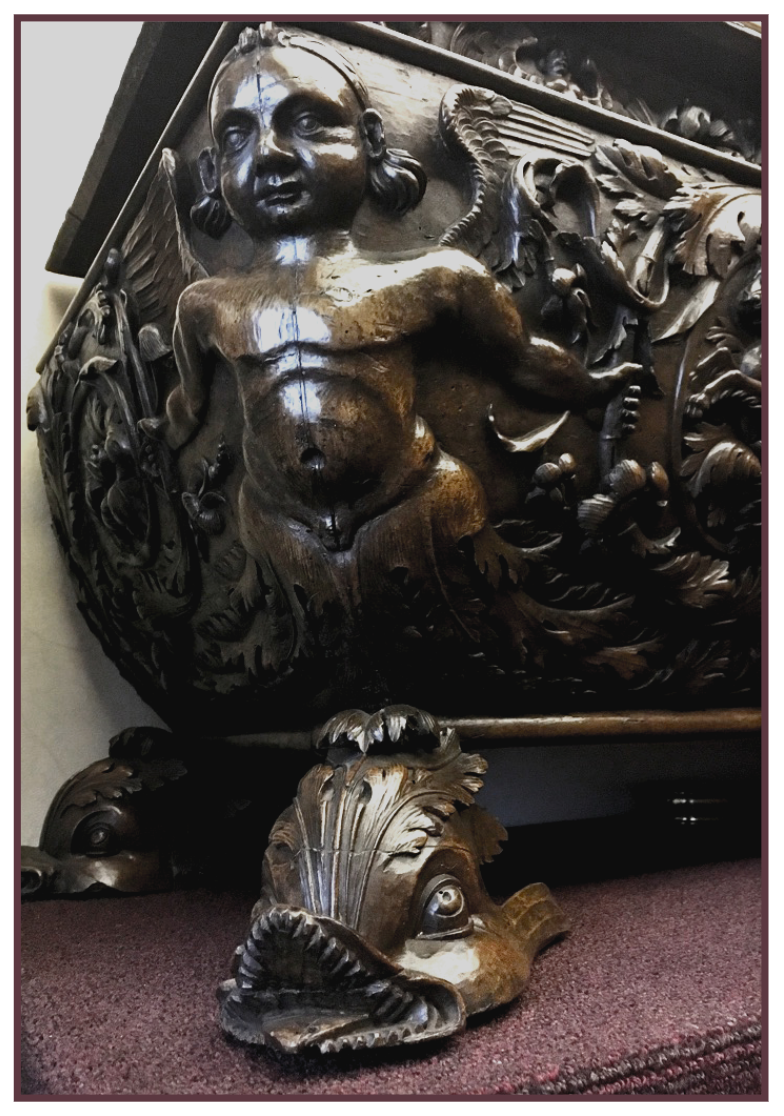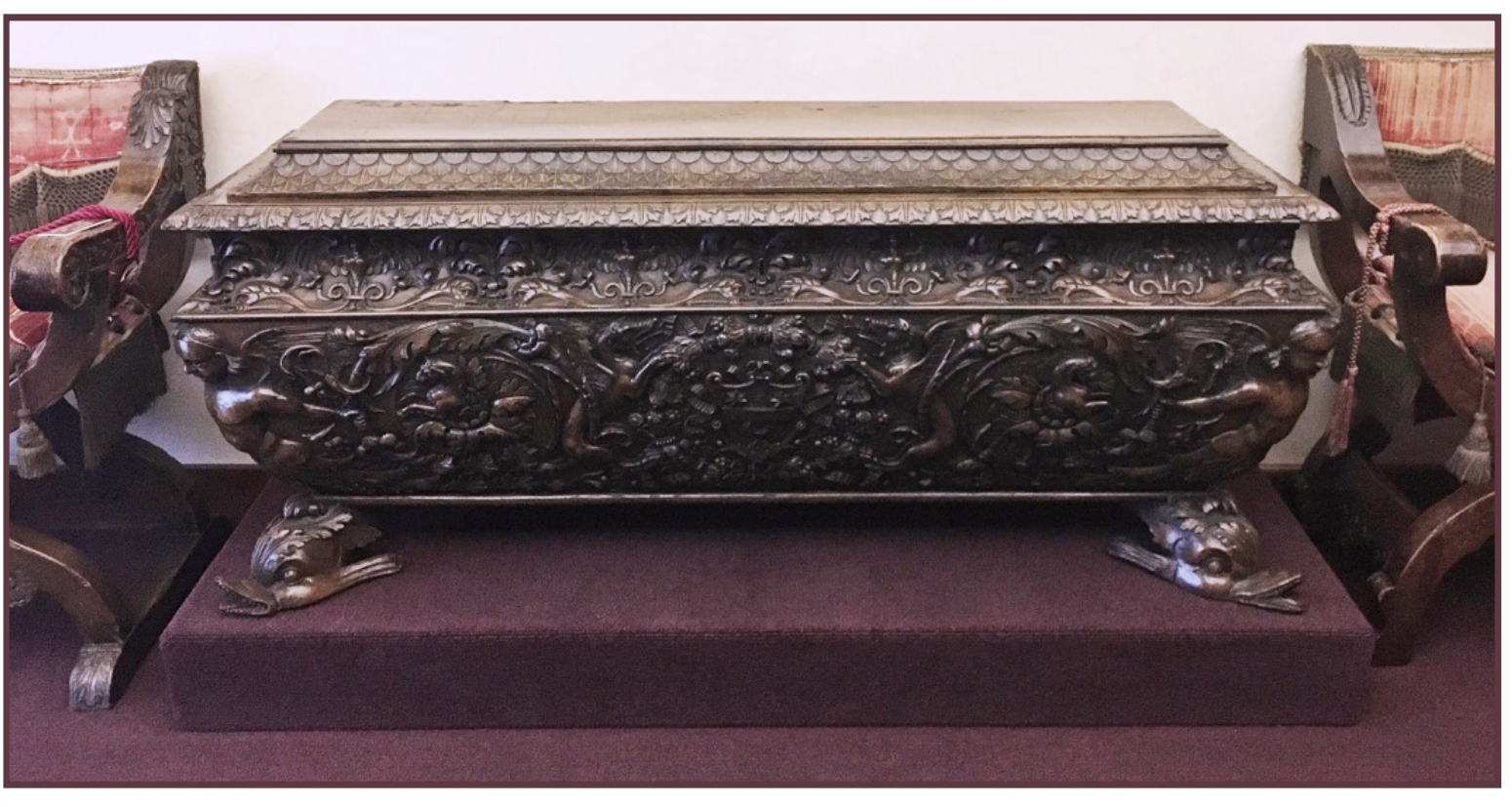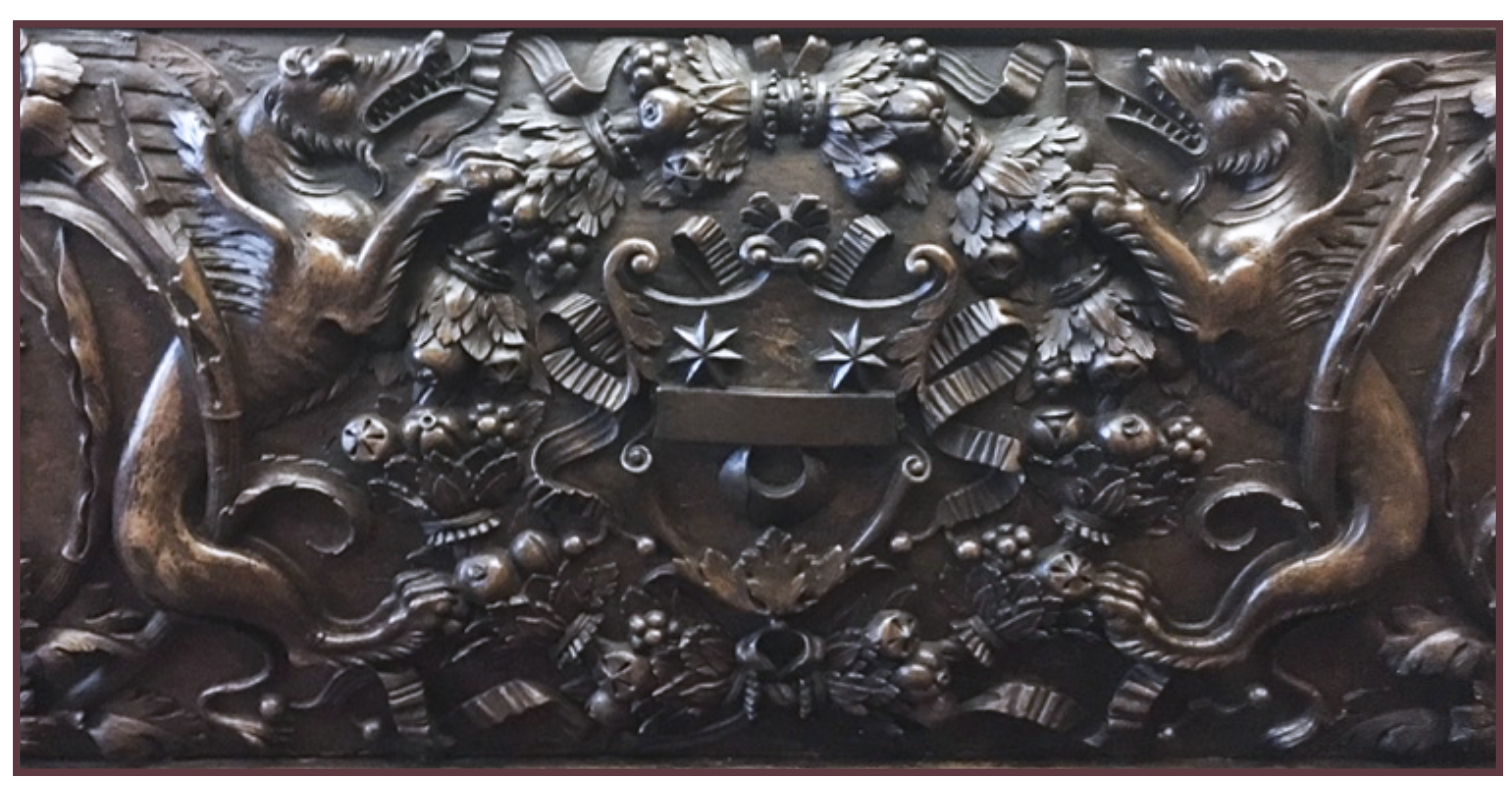Object of the Month: September 2017
Cassone
Walnut
Italian, 16th century
Years ago a television series aired featuring a dolphin named “Flipper.” He exhibited the usual amount of dolphin intelligence and often saved the day. One of M&G’s pieces of furniture includes carved dolphins and takes a person to a time and place where dolphins symbolized various aspects of life.
 During the 15th and 16th centuries, Italy specialized in the production of a special piece of furniture called, cassone, the Italian word meaning chest. Of the eighteen cassoni (plural for cassone) in M&G’s collection, one is beautifully and elaborately carved; rather than a lion’s claw for feet or some other standard furniture base, this cassone rests on four carved dolphins. In his catalog for M&G’s furniture collection, furniture connoisseur Joseph Aaronson described the chest this way, “the dynamic carving of swirling plant and grotesque animal forms, framed at the corners by winged putti figures. . . is based on Roman patterns and is unmistakably Italian in its playful freedom.”
During the 15th and 16th centuries, Italy specialized in the production of a special piece of furniture called, cassone, the Italian word meaning chest. Of the eighteen cassoni (plural for cassone) in M&G’s collection, one is beautifully and elaborately carved; rather than a lion’s claw for feet or some other standard furniture base, this cassone rests on four carved dolphins. In his catalog for M&G’s furniture collection, furniture connoisseur Joseph Aaronson described the chest this way, “the dynamic carving of swirling plant and grotesque animal forms, framed at the corners by winged putti figures. . . is based on Roman patterns and is unmistakably Italian in its playful freedom.”
Rome became the center of cassone production in the mid to late sixteenth century. According to the Encyclopedia of Interior Design, by this time society’s taste had shifted from the chests with painted panel scenes and portraits to a more sculptural form of decoratively carved dark walnut with little to no paint or gilding. M&G’s cassone represents the era’s preferred choice with its dark wood and ornate carvings.
However, why would dolphins be carved for the feet? Most people at this time were familiar with the mammal due to the fact that Italy is surrounded by water. Greek mythology presents dolphins as companions to Dionysius, a seafaring god; and they are also connected with Venus the goddess of love. Dolphins symbolized long life and safety in travel. Since cassoni were often given in pairs as a wedding gift by a bride’s parents, it was one way to express their support and desire that a marriage would be safe, long, and produce a healthy family. In its context, a cassone was both a practical and necessary piece of furniture, but also a status symbol in society for newlyweds.
M&G’s cassone was a gift from Carl Hamilton in 1956, and remains somewhat mysterious. Its shape may indicate when it was made and its possible origin in the seaport of Genoa. On the front is a crest, yet no further information has been found to connect it to a specific family. As cassone production is further studied, perhaps more will be learned about M&G’s cassone in the future.
John Good, Security Manager
Published in 2017

